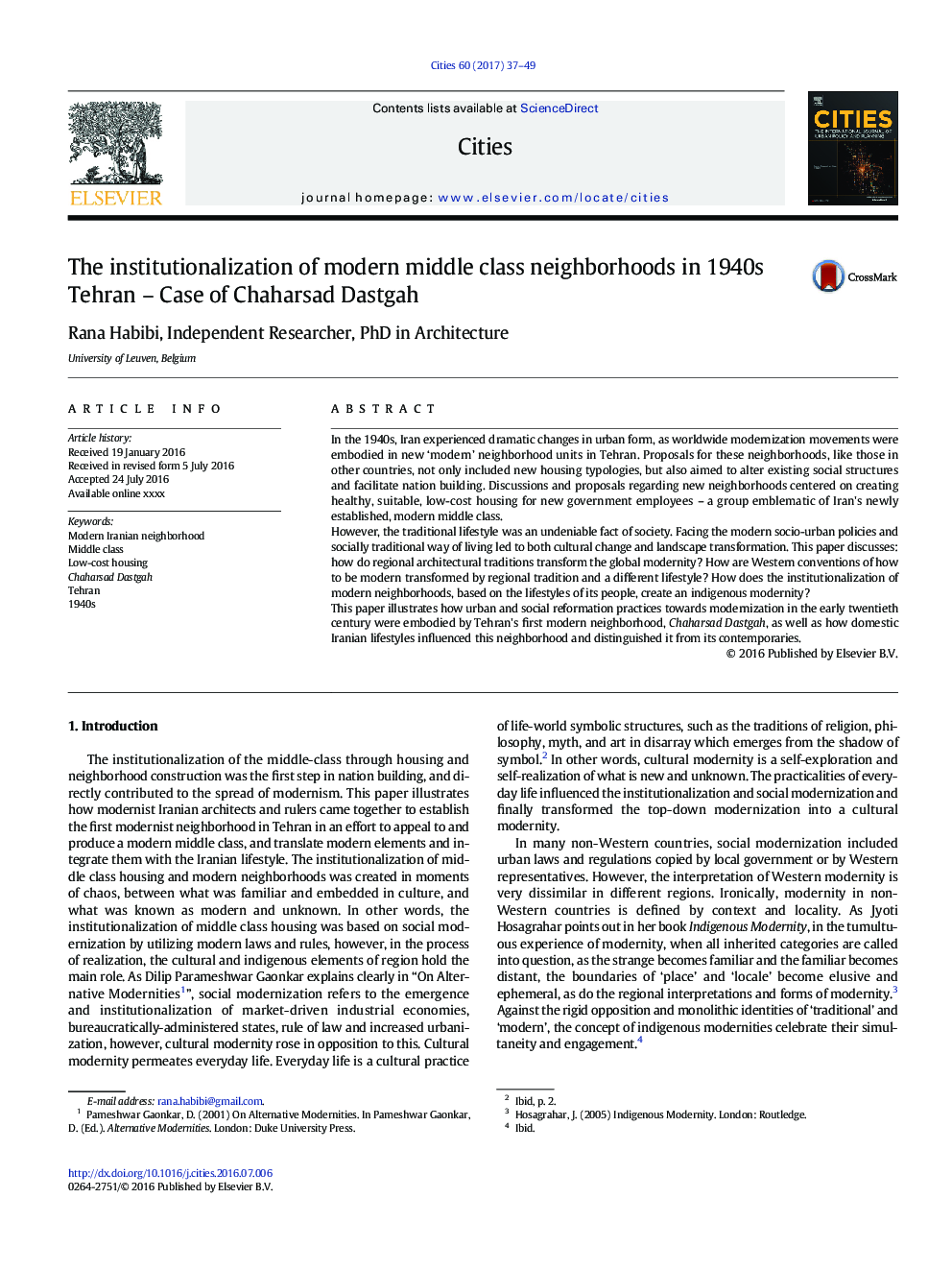| کد مقاله | کد نشریه | سال انتشار | مقاله انگلیسی | نسخه تمام متن |
|---|---|---|---|---|
| 1008154 | 1377638 | 2017 | 13 صفحه PDF | دانلود رایگان |
In the 1940s, Iran experienced dramatic changes in urban form, as worldwide modernization movements were embodied in new ‘modern’ neighborhood units in Tehran. Proposals for these neighborhoods, like those in other countries, not only included new housing typologies, but also aimed to alter existing social structures and facilitate nation building. Discussions and proposals regarding new neighborhoods centered on creating healthy, suitable, low-cost housing for new government employees – a group emblematic of Iran's newly established, modern middle class.However, the traditional lifestyle was an undeniable fact of society. Facing the modern socio-urban policies and socially traditional way of living led to both cultural change and landscape transformation. This paper discusses: how do regional architectural traditions transform the global modernity? How are Western conventions of how to be modern transformed by regional tradition and a different lifestyle? How does the institutionalization of modern neighborhoods, based on the lifestyles of its people, create an indigenous modernity?This paper illustrates how urban and social reformation practices towards modernization in the early twentieth century were embodied by Tehran's first modern neighborhood, Chaharsad Dastgah, as well as how domestic Iranian lifestyles influenced this neighborhood and distinguished it from its contemporaries.
Journal: Cities - Volume 60, Part B, February 2017, Pages 37–49
